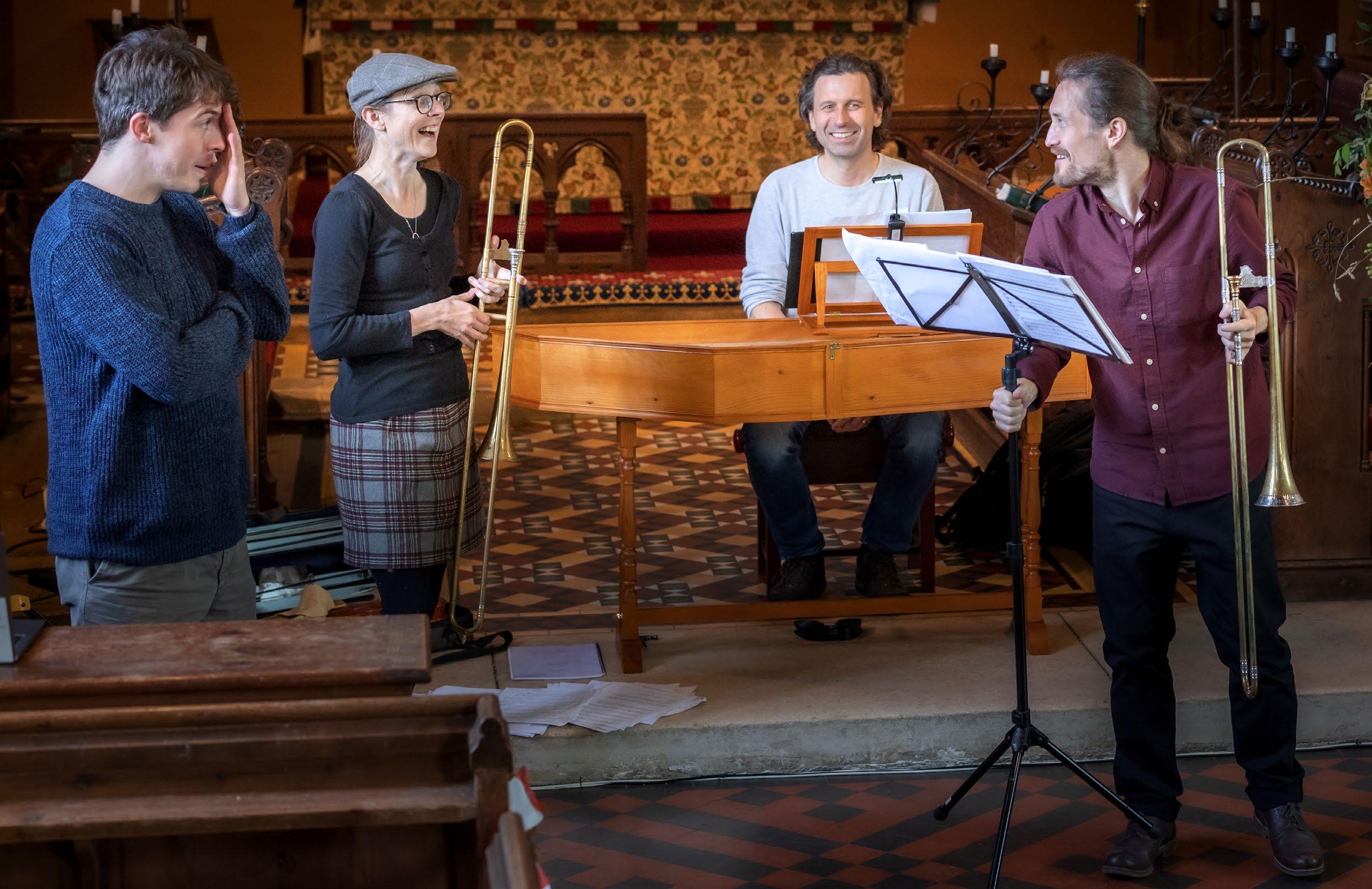
4 minute read
A CRY WAS HEARD
BY EMILY WHITE
Across the week that everything stopped in March 2020, I was meant to be performing in three countries; I was heading for my busiest year yet. Like everyone I have had a lot of time since then to reflect and think about the life of a musician during the pandemic. As well as concern for everyone at risk from the illness, as a musician two things about the situation struck me; firstly, that all that travel was inconsistent with my environmental concerns, and secondly that playing Somewhere Over the Rainbow on my doorstep was the first time my neighbours had ever heard me play. I have lived in Dursley near North Nibley since 2004 and yet fly to other countries to share my music instead of doing so in my own community. This is partly because it feels like a compliment to be invited to perform far away and hard to resist the temptation, despite the exhaustion. But I would like to re-think that idea, and maybe it is possible to value local music-making and local musicians in the same way that we now value locallysourced food and crafts. (The prospective difficulties looming with Brexit red tape are of course making it harder to travel anyway.)
Facing the prospect of a very empty diary I thought to make a start by putting on a concert in my own area. It was also a chance to offer work to my colleagues who I have missed playing with so acutely during these many months. At the time of writing, the concert will be called A Cry was Heard, to be performed on 1 August 2021 at St. Martin’s Church, North Nibley, Gloucestershire.
It will feature Auf dem Gebirge (From the Mountains a cry was heard) by Schutz, with the countertenor Guy James who grew up in my hometown of Dursley coming home to sing for us. Martyn Sanderson and Dave Todd will join me on sackbuts in that piece and Martyn will also fly around on the sackbut in a Castello Sonata for trombone and violin. I choose to perform improvised divisions and Bassano-composed ornamentation on Palestrina’s Io son Ferito, continuing the exploration of improvised ornamentation that I had begun during lockdown, examples of which can be found on my YOUTUBE channel.
Once we have paid the musicians all profits will go to the HELP MUSICIANS fund, which offers support to us all when we need it.
IN REHEARSAL, L-R GUY JAMES, EMILY WHITE, ROBIN BIGWOOD, MARTYN SANDERSON. PHOTO CREDIT: TORBJORN HULTMARK.
So what happened?
They Loved it! They came, they oversubscribed, we had to turn some away.
The concert was in memory of a local person, Audrey Sewell, who had supported local live music for decades. As live music has been under such threat in these last 18 months this gave an extra charge to the atmosphere. To my surprise and delight this concert of 17th century and contemporary music on historical instruments in an off-grid village church was in such demand we were turning people away. It was so moving to see these 100 faces braving the covid surge to hear our music. The chamber playing was a superb, three sackbuts gave a glimmering shine to the Schutz.
For me one sackbut/trombone question was advanced by this concert. I have long wanted the chance to try performing divisions (fast decorative notes) on the top line of motets. The current convention is usually to give this role to a cornetto, or a violin, and limit the trombone to a plain internal line, or some of the composed bass divisions which are not where I enjoy flying around. (Without a trigger, a tenor sackbut grovelling around attempting semiquavers in the bass region can sound hilarious!). This being my own concert, I programmed the role for myself in the Palestrina madrigal Io son Ferito. I was so wholeheartedly pleased that it did work taking the top line down an octave, and I based the divisions on Bassano combined with my own improvised ones. I recorded a video of this for my YouTube channel the day before the concert and will use it in evidence if I am turned down again when I suggest this in the future!
A special shout out to Dave Todd and Martyn Sanderson on sackbuts and my dad, Andrew White, who I made play viola at the pitch of a=465 for the first time! The crowning glory was Guy James’s singing. It was utterly sublime – an ambassador for the beauty and power of the countertenor voice. I was proud to say that we were all but one local, and three of us had attended the local primary and comprehensive schools. The celebration of the locally produced musician has begun!
I am very pleased to report that the amount raised for Help Musicians, though not yet fully counted, is at least £1000. ◆








